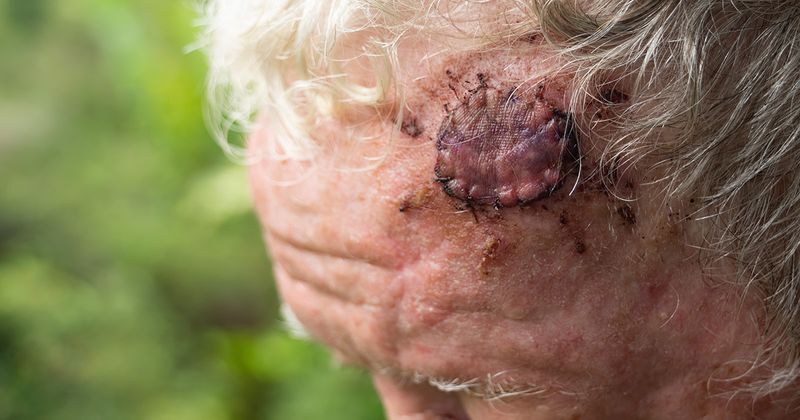Understanding benefits, shortcomings of skin substitutes can help guide treatment
Key takeaways:
- The seven types of skin substitutes are amnion, cultured epithelial autograft, acellular allograft, cellular allografts, xenografts, composites and synthetics.
- These options can be customized for patients.
Considering the unique characteristics of different skin substitutes will provide improved wound care management that meets patient needs, according to a study.
“[Skin substitutes] are numerous and increasingly used in dermatologic surgery, and it is often difficult to compare these products,” Mitchell Davis, MD, of the department of dermatology at the University of California, San Francisco, and colleagues wrote.

“This review aims to assist clinicians in their selection of [skin substitutes] by providing updated and concise information about the efficacy, risk, availability and relative cost of the various options available,” the researchers continued.
Davis and colleagues utilized articles from PubMed, information from manufacturer websites and the opinions of study experts to assess the benefits and costs of the seven skin substitute types: amnion, cultured epithelial autograft, acellular allograft, cellular allografts, xenografts, composites and synthetics.
Amnion
Made of human amniotic/chorion membrane, amnion skin substitutes possess unique benefits in dermatological surgery for burns, ulcers and surgical wounds.
Amnion can be prepared fresh, dried or frozen and has a storage life up to 5 years. However, reapplication is often necessary, and the cost is higher than other skin substitute options, according to the researchers.
Nevertheless, this type of skin substitute specifically performed well in patients with diabetic foot ulcers due to the fast rates of wound healing and small amount of material needed.
Cultured epithelial autograft
Cultured epithelial autografts are autologous keratinocyte grafts mainly used in the treatment of burns, ulcers and chronic wounds. An advantage of cultured epithelial autografts is that graft rejection is very unlikely.
Although this skin substitute has allowed high survival rates among burn victims, the effectiveness of cultured epithelial autografts in regular dermatological surgery is still relatively limited. This may be due to its fragility and required same-day use, 3- to 4-week preparation time, poor cosmesis and cost, according to the researchers.
Acellular allograft
Derived from cadaveric skin tissue, acellular allografts are stable wound coverings that present many cosmetic advantages especially for reconstruction after excisional and Mohs surgeries. In fact, nearly 90% of 37 excision wounds found in literature were completely closed with acceptable cosmetic results after treatment with an acellular allograft.
According to the study, acellular allografts are also easy to use and have no immunologic response; however, the processing time and possibility of graft rejection and infection are continued disadvantages for this skin substitute.
Cellular allografts
Comprised of keratinocytes, fibroblasts, growth factors and collagen, cellular allografts are also derived from cadaveric tissue as well as human fetal foreskin. According to this study, this type of skin substitute is on the rise in dermatological surgery especially in the treatment of burns, ulcers and surgical wounds.
Compared with a composite skin substitute, cellular allografts show similar rates of healing in the treatment of venous leg ulcers with a higher cost savings. The skin substitute also showed an 8% increase in wounds closed at an almost 10% higher wound size area compared with the standard of care; however, reapplication is often necessary weekly or biweekly, according to the researchers.
Xenografts
This skin substitute is an animal-derived, absorbable dermal substitute indicated for ulcers, surgical wounds and chronic wounds.
This method has mainly been used in reconstruction surgery of the scalp and skin cancer excisions, particularly in near-critical structures.
Xenografts can also be used as a temporary dressing while waiting for wound closure. They present many advantages including lower cost, decreased exudate production, decreased pain, availability and reduced water loss during healing.
They can also be stored up to 5 years; however, reapplication and an epithelial autograft are required.
Composites
Containing allogenic fibroblasts and keratinocytes on a collagen base, composites have demonstrated efficacy and a lack of immune response in patients.
Composites usually follow Mohs and excisional surgery with most patients treated with this skin substitute making a full wound recovery and demonstrating good cosmetic outcomes. However, composites pose a risk for infection and have a shorter storage time than other skin substitute methods, according to the study.
Synthetics
Synthetics are known as one of the most “user-friendly” skin substitute options because they require minimal preparation and are easy to apply, according to the researchers.
Synthetic skin substitutes are made of synthetic, bi-layered, bioresorbable dermal substitute with hyaluronic acid that is slowly released into the wound to promote regeneration for burns, ulcers, surgical wounds and hidradenitis suppurativa.
However, the authors note that when compared with a composite skin substitute for the treatment of chronic wounds, synthetic skin substitutes may not be as effective. Additionally, synthetic skin substitutes are associated with a foul odor.
“Skin substitutes are an increasingly used aspect of wound care management and offer unique advantages and disadvantages,” Davis and colleagues wrote.
“By taking the various characteristics of these skin substitutes into consideration,” the authors continued, “more personalized wound care management may be given to meet the patients’ needs.”
